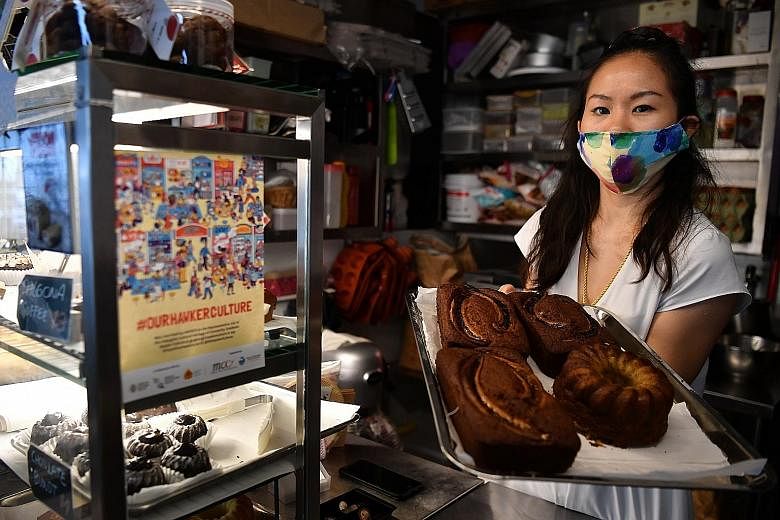SINGAPORE - Madam Muthuletchmi, who has been selling South Indian food as a hawker for 27 years, said hawker culture's inscription on the Unesco intangible cultural heritage list made her feel seen.
On some days, the 59-year-old said, the daily transactions are so quick and impersonal that they can make her feel taken for granted. "I get tired or worn out because it's very hard, very hot, and when you are young, you have more energy," she said. "I wanted to give (it) up, then my son stepped in."
She initially did not want her son to follow in her footsteps as a hawker, because of the gruelling hours, but was convinced by his passion for the job. The Unesco achievement sets her mind at ease, now that hawker culture here has garnered international prestige.
A day after Singapore's three-year bid for hawker culture to be inscribed on the Unesco list finally came to fruition, hawkers expressed their hope that it will translate into concrete results, attracting tourists after the pandemic and more young people into the trade.
Prime Minister Lee Hsien Loong, in a Facebook post on Wednesday night, had thanked them for "nourishing a nation's stomach and spirits", and for their "sweat, toil and dedication to their profession".
In the nation's early history, hawkers sold affordable food out of pushcarts, going from alley to alley to peddle their fare. Later, the authorities built hawker centres, and the rest, after Wednesday's momentous decision, is history.
Ms Amber Pong, 30, is one of a generation of young hawkers who have entered the trade for its merits, in spite of the tropical heat and long days.
The former marketing executive said she had always wanted to be a hawker, even leaving her job to go to Australia to work as a pastry chef in Melbourne to gain experience before finally setting up her stall in January.
She sells cakes at Ghim Moh food centre and said she chose to open a hawker stall rather than a bakery or cafe because she enjoys meeting people of all ages and ethnicities.
"Why did I want to be a hawker? I grew up visiting hawker centres at least three times a week and felt very comfortable. Having my stall in a hawker centre makes it very accessible, so all kinds of people can buy my cakes," she said.
As a show of appreciation, about 6,000 hawkers in more than 110 hawker centres across Singapore will, in the coming weeks, receive a label indicating their new Unesco intangible cultural heritage status.
They will be able to stick the label on their stall fronts as a stamp of recognition, although some hawkers, like fishball noodle seller Tom Loo, 35, are more pragmatic.
He said hawkers are more preoccupied daily with paying the rent and taxes, and said the best way to keep hawkers in business is to make sure costs remain low, as even a small increase can hurt them, especially when these cannot be passed on to consumers.

Singaporean food critic K.F. Seetoh pointed out that other stakeholders will now have to actively leverage the Unesco recognition to make it count for hawkers.
He said those involved will have to look at new possibilities in trade, tourism, education, as well as a hawkers' museum and food festival that both Singaporeans and visitors can connect with.
"When the airport doors reopen, the world will come hungry, and with a vengeance... It's no longer just about what and where to eat but also what are the stories and opportunities behind this makan culture," he said.



